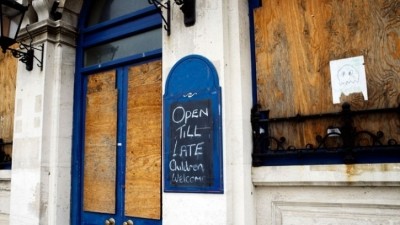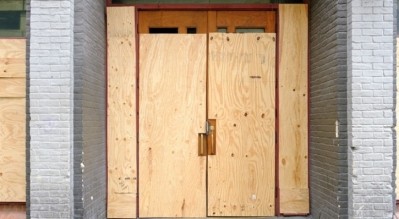Restaurant closures surge to highest ever quarterly total

Figures obtained under the Freedom of Information Act shows that 514 restaurant businesses entered insolvency in Q4 2023, beating the previous record of 481 set in second quarter of the year.
A total of 1,932 restaurant businesses went bust in 2023, equating to an average of 5.3 going insolvent every day.
It reflects a 45% increase on 2022 when 1,332 (3.6 per day) restaurant businesses collapsed.
According to Price Bailey, a convergence of adverse factors is squeezing the hospitality sector, including persistently high inflation and rising interest rates. At the same time the disposable income of restaurant-goers is declining.
Other factors include the need to repay Covid support loans and strike action on the railways leaving many restaurants in city centre locations losing out on vital trade at key points in the year.
With many hospitality businesses are on life support, and the services sector leading the way into recession, Matt Howard, head of the insolvency and recovery team at Price Bailey, warns that business failures in the restaurant trade are likely to continue to rise throughout 2024.
“The inflation rate for restaurants crept up again in January and hopes of an early rate cut appear to be receding,” he says.
“The first quarter is a much slower trading period for restaurants, which will make it very difficult for many to recover from a lacklustre festive season.”
There have already been numerous high-profile restaurant closures announced across the sector this year.
They include Simon Rimmer’s Didsbury restaurant Greens; Maene in London’s Shoreditch; Phill and Deb Lewis’ sustainability-focused Cardiff restaurant Kindle; and Black & White Hospitality’s flagship Mr White’s restaurant in London’s Leicester Square.
Price Bailey explains that rising interest rates, which jumped from 3.5% to 5.25% in 2023, mean that many highly leveraged businesses in the restaurant sector are unable to meet loan repayments. At the same time banks are clamping down harder on non-performing loans and shifting their focus from supporting distressed businesses to those with growth prospects.
Additionally, the debt-to-equity ratios of many mid-market restaurant chains have surged since the pandemic, which has made them highly vulnerable to rising interest rates.
“These highly leveraged businesses were betting on interest rates staying low but with rates having sharply risen many are unable to make loan repayments,” Howard continues.
“The longer rates stay at current levels, the more restaurant businesses are likely to succumb.
“As rates have risen banks are piling pressure on restaurants to make capital as well as interest repayments on loans. This has proved the final nail in the coffin for many restaurants.”





















